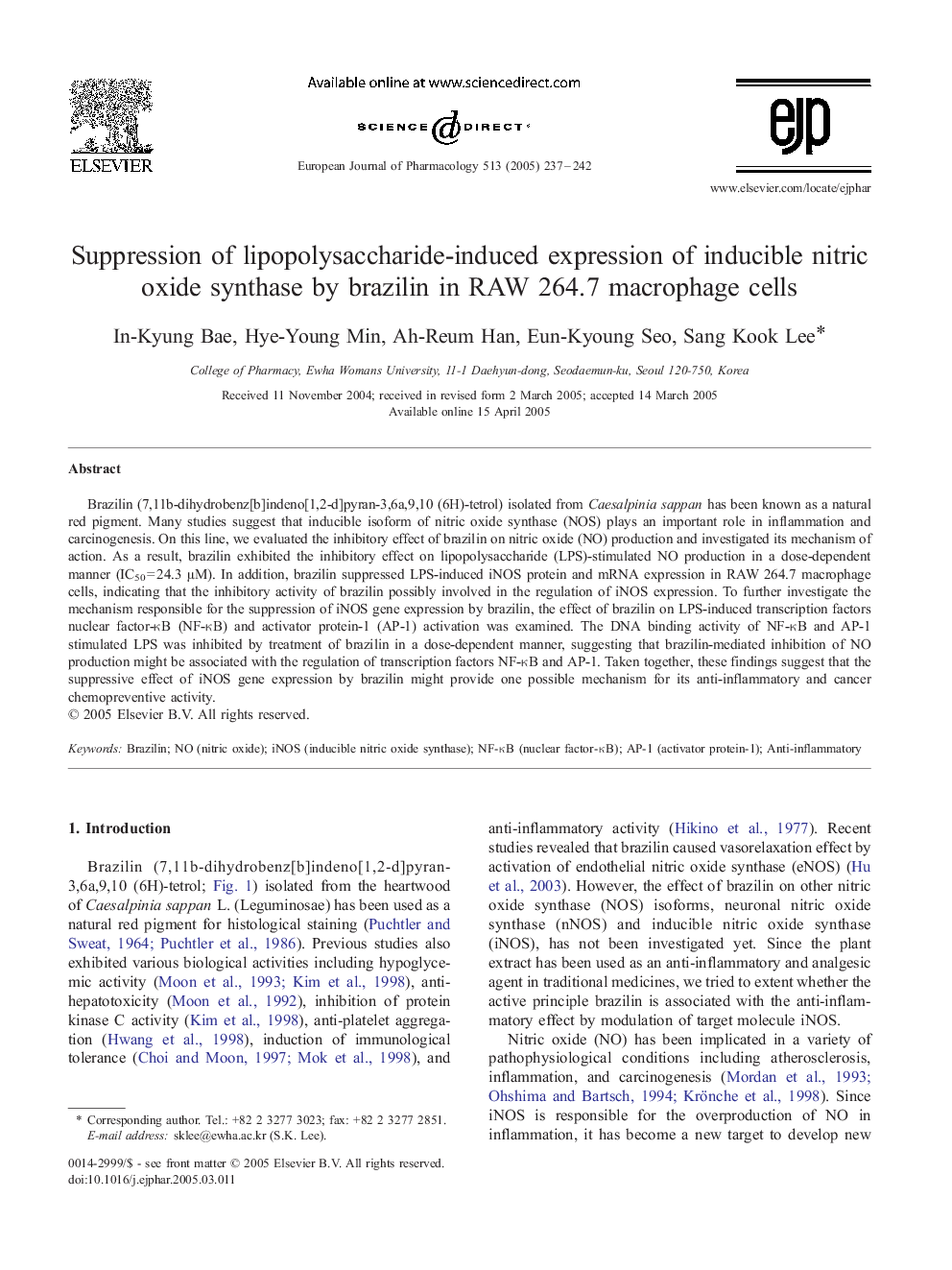| Article ID | Journal | Published Year | Pages | File Type |
|---|---|---|---|---|
| 9921357 | European Journal of Pharmacology | 2005 | 6 Pages |
Abstract
Brazilin (7,11b-dihydrobenz[b]indeno[1,2-d]pyran-3,6a,9,10 (6H)-tetrol) isolated from Caesalpinia sappan has been known as a natural red pigment. Many studies suggest that inducible isoform of nitric oxide synthase (NOS) plays an important role in inflammation and carcinogenesis. On this line, we evaluated the inhibitory effect of brazilin on nitric oxide (NO) production and investigated its mechanism of action. As a result, brazilin exhibited the inhibitory effect on lipopolysaccharide (LPS)-stimulated NO production in a dose-dependent manner (IC50 = 24.3 μM). In addition, brazilin suppressed LPS-induced iNOS protein and mRNA expression in RAW 264.7 macrophage cells, indicating that the inhibitory activity of brazilin possibly involved in the regulation of iNOS expression. To further investigate the mechanism responsible for the suppression of iNOS gene expression by brazilin, the effect of brazilin on LPS-induced transcription factors nuclear factor-κB (NF-κB) and activator protein-1 (AP-1) activation was examined. The DNA binding activity of NF-κB and AP-1 stimulated LPS was inhibited by treatment of brazilin in a dose-dependent manner, suggesting that brazilin-mediated inhibition of NO production might be associated with the regulation of transcription factors NF-κB and AP-1. Taken together, these findings suggest that the suppressive effect of iNOS gene expression by brazilin might provide one possible mechanism for its anti-inflammatory and cancer chemopreventive activity.
Keywords
Related Topics
Life Sciences
Neuroscience
Cellular and Molecular Neuroscience
Authors
In-Kyung Bae, Hye-Young Min, Ah-Reum Han, Eun-Kyoung Seo, Sang Kook Lee,
